The educational materials listed on this page are about No-Till.
No-till farming is a conservation tillage technique where all of a previous crop's residue is left on the soil surface after harvest. No-till systems are usually managed using specific tools—a conservation planter for row crops or a no-till drill for more narrowly seeded crops. Crop residue on the soil surface helps improve soil health by providing protection against soil erosion, temperature extremes and water evaporation, and adding soil organic matter. If converting to no-till from a traditional tillage system, producers may start with a less drastic change such as strip-, ridge- or zone-till to help increase the soil’s organic matter. No-till farmers have to be more aware of weed control, compaction prevention and seed placement than conventional farmers. Cover crops are often turned under in conventional tillage systems, but adding cover crops to a no-till system improves soil health, provides nutrients and increases soil moisture. Using no-till in organic systems is not as common because residue on the soil surface increases weed pressure. Organic producers can use a roller crimper to flatten cover crops, which creates a mulch that will help suppress weeds. Learn about the impact that tillage has on your soils and various soil conservation options in the Reducing Tillage chapter of Building Soils for Better Crops.
Showing 1-20 of 27 results

New “Cover Crops and Soil Health” Video from SARE
The newest episode of SARE’s "What is Sustainable Agriculture" animation series illustrates how producers can use cover crops to improve productivity and sustainability. In just a few short minutes, “Cover Crops and Soil Health” outlines how cover crops can build soil structure, protect water quality, suppress pests and improve a farm's bottom line. Combining cover […]
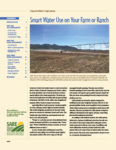
Smart Water Use on Your Farm or Ranch
As producers throughout the nation grow increasingly concerned about water scarcity, farmers, ranchers and agricultural educators are beginning to explore new, conservation-oriented approaches to water use.
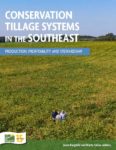
Conservation Tillage Systems in the Southeast
This production manual provides comprehensive guidance on conservation tillage systems for farms in the southeastern United States. It covers the core components of conservation tillage systems and includes both regional considerations and producer experiences.
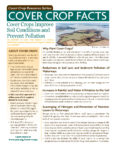
Free Fact Sheets Identify Broad Benefits of Cover Crops
Along with cutting costs and increasing crop productivity, cover crops provide various ecosystem services that benefit the environment both on and off the farm. For instance, adding cover crops to a rotation can significantly increase the portion of the year when living roots are present for soil organisms to feed on, which can have a […]
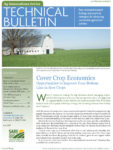
Cover Crop Economics Report Now Available in Print
Cover Crops Offer Options in Wet Soil As more farmers across the nation begin to incorporate covers into their rotations, they find that this valuable conservation practice pays in more ways than one. Many farmers in states suffering from oversaturated fields that prevented or delayed planting are considering cover crops. To help farmers evaluate the […]

When Do Cover Crops Pay? New USDA-SARE Report Addresses the Question
Farmers around the country are planting cover crops on millions of acres to protect and improve the soil, and the more that farmers use cover crops, the more they value this conservation practice. Cover Crop Economics, a new report published by USDA-SARE looks at the economics of cover crops to help farmers answer that big […]

Cover Crop Economics
Cover crops can build soil health, control weeds, conserve moisture, provide grazing opportunities and more. But when do they start to pay for themselves? This analysis looks at the economics behind different management scenarios to determine if cover crops are likely to improve profitability in one, three or five years of use in corn and soybean rotations.

Improving Soil Health Through Cover Crops
Farmers around the country are discovering the power of cover crops to curb erosion and improve soil health. This video is from Pennsylvania, where a Penn State researcher and a grain farmer are partnering to spread the word.

Advanced Cover Cropping Insights from Farmer Experts
Great Plains Perspective Central Corn Belt Perspective Eastern Perspective

Organic Production
Capitalize on the booming organic industry. This topic room has resources on organic systems, pest management, animal production, marketing, certification, conservation and much more.
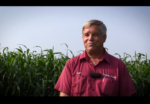
Innovative Assessment Helps Farmers in the Northeast Improve Soil Health
Improving soil health without understanding the soil's condition is not easy and traditional soil tests, though important management tools, don't provide information on the physical structure or microbial life living in the soil. That is why a multidisciplinary team at Cornell University created a soil health assessment, which measures physical, chemical and biological indicators as […]

2015/2016 Report from the Field
Read about SARE-funded work in the areas of sustainable dairy cropping systems, soil health assessments, nutrient management, cover crops, beginning farmers, pollinators, technical assistance programs for women farmers, and more. This edition includes highlights of projects funded through the graduate student program, and the highly regarded Sustainable Agriculture Fellowship, a professional development program coordinated by SARE and NACAA.
Farmer Panel on Cover Crops
Farmers Skip Paul (Rhode Island), Jeff Frey (Pennsylvania) and Perry Lilley (Maine) share their experiences with cover crops, including their motivation for using them, successes and challenges, factors that play into decision making around cover crops, and advice for ag service providers who want to encourage farmer adoption of this vital conservation practice.
Establishment Methods for Cover Crops and Cash Crops in Grain Production Systems
Steven Mirsky (USDA-ARS), Greg Roth (Penn State University) and Sjoerd Duiker (Penn State University) discuss common establishment methods for cover crops; the importance of matching the right cover crop species with the right methods; and other topics such as no-till versus tillage; optimal timing of cash crop establishment, drills versus planters, planter and drill attachments and set up; cover crop termination; and planting green.
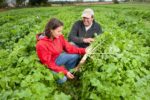
For Vegetable Farmers, a New No-Till Tool in Forage Radish
Vegetable farmers who want the myriad benefits of winter cover crops may be setting themselves up for a hectic spring schedule, when the challenge of planting during a narrow window of good weather becomes more complicated by the need to first terminate that winter crop. To make their lives a little easier, University of Maryland […]
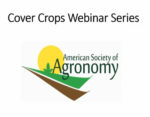
Cover Crop Management and Termination
Planning for proper spring management of your cover crop needs to happen before April. Learn from two experts in the field on a couple different methods for termination.

2014 National Conference on Cover Crops and Soil Health
All session recordings and slide presentations from the National Conference on Cover Crops and Soil Health are available online. Held in 2014 in Omaha, Neb., the event brought together 300 agricultural leaders and innovators to explore how we can make American agriculture more sustainable through improved soil health. Attendees represented agricultural industry, the farm community, academia, government, commodity and conservation organizations.

Integrating No-Till or Strip-Till with Cover Crops
Maximize soil conservation and soil health benefits of cover crops by combining this practice with no-till or strip-till systems.
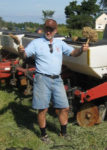
No-Till and Cover Crop Innovations Increase Dairy Profits
Summertime for dairy farmers in New England is anything but slow. Silage corn must be planted and harvested in a short window to provide high-quality forage for cattle, leaving little time to plant cover crops to replenish the soil. Under pressure to get corn planted early, farmers may delay the first cutting of hay, sacrificing […]
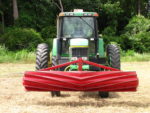
Grant Puts (Good) Crimp in Farm Operations
It all began in 2002 with a $6,500 SARE grant and the seed of an idea. Today, that idea has grown into hundreds of research projects around the country, an international business and a new, effective no-till tool that farmers are adding to the ways they suppress weeds in cash-crop fields. The tool is the […]